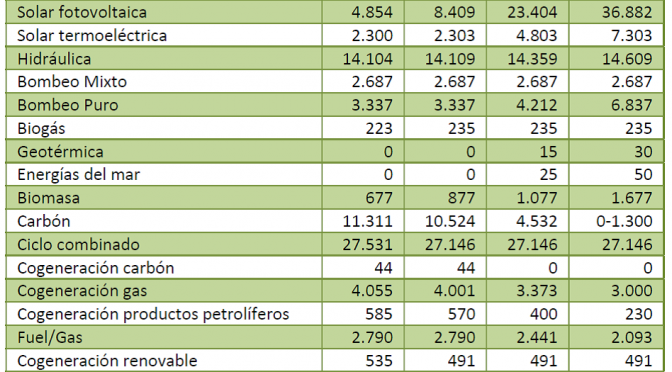The Spanish Wind Energy Association (AEE) appreciates the approval of the proposed law by the Council of Ministers and its referral to the Cortes
It is an important first step in the process of adopting a Law that is called to be the founding milestone of the Spanish energy transition and the fulfillment of the Paris agreement by our country.
This Law must be the stable framework for action and the starting signal to activate the opportunities for economic recovery that Spain can rapidly bet on new renewable facilities, which especially in the case of wind farms, has a tractor effect on everything. the territory over the industrial value chain that the sector has in our country, as well as the materials and construction industry that are necessary for its materialization; and, in addition, they generate new economic income at the local level, particularly in the regions of emptied Spain.

The level of decarbonisation ambition for 2050 of the Law, zero net emissions, is in line with the challenge that climate change represents for our country, and at the same time highlights the capacity of our society and our territory to achieve this goal. . It is also a clear opportunity to sustainably develop our economy, something for which our companies are prepared: contributing all their experience, knowledge, talent for innovation, and the work of thousands of people to make the energy consumed in Spain be clean, renewable and indigenous.
The intermediate objectives for 2030 are related to the objectives established in the energy and climate package 2021-2030 of the European Union, but they are lower than the objectives established in the National Integrated Energy and Climate Plan (PNIEC). We are convinced that, as we move forward throughout this decade in the deployment of renewable energies, and the economic virtuous circle that this entails is generated, the objectives of the Law may also be increased to reflect the ambition of the PNIEC. It should not be forgotten that even after reaching the 2030 target of reducing CO2 emissions by 20-23% compared to 1990, more than 200 M tonnes of CO2 will still have to be eliminated until 2050, so throughout this decade It would be necessary to lay the foundations so that in the following two we have the technology, industry, labor, financing and regulatory framework adequate for this second phase of decarbonization, which is going to be even more demanding. In this decade, the foundations must be built to continue advancing in the following two.
The proposed Law includes certain aspects that will allow progress in technological development in the medium and long term, among others some claimed by PREPA itself: the establishment of the legal figure of storage and hybridization of renewable technologies; the possibility of optimizing the access points to the network by means of overpowering (provided that the established technical requirements are met), which will also favor the repowering of the older wind power plants by more modern technology and with a better use of the resource, or advance in the electrification of transportation.
Something that AEE has requested for years has also been reflected in the proposal: the Law proposes to change the current design of renewable energy auctions of investment incentives for an auction system in which the remuneration price of the energy from the new renewable facilities necessary to achieve the 2030 targets, which will facilitate the financing of the facilities and provide security to investors; and in auctions, “different generation technologies can be distinguished based on their technical characteristics, levels of manageability, location criteria, technological maturity and those that guarantee the transition to a decarbonised economy.” This distinction in auctions between technologies will highlight the contribution that each of them has to make to the decarbonisation of energy, and at the same time to the operation of the electrical system.
From AEE, celebrating the approval of the proposed Law by the Council of Ministers and its referral to the Cortes, we consider that there are some key aspects that are not included in the current text of the proposal. These are as follows:
The non-inclusion in the current text of the reference of 3,000 MW of renewable power to be auctioned annually makes it even more important to obtain a schedule of renewable auctions for at least the next 5 years (as in other European countries) and its inclusion in an urgent form in some normative figure that gives it validity, so that companies can plan their investments correctly, the industry can adapt its manufacturing capacity, and avoid unnecessary accelerations, braking and “call” effects, which can generate problems logistical and economic inefficiencies, which could jeopardize the achievement of the 2030 goals.
It is necessary to establish a specific Roadmap for the changes in depth required by the current fiscal policy in order to transform it into a green tax system, according to the challenge of mobilizing investments of more than 20,000 million euros annually in renewable technologies, energy efficiency and adaptation. to climate change. Clear action planning in this regard is necessary to move at the right pace and achieve the 2030 goals.
It is critical to regulate the situation of access and connection to the network. On the one hand, it is necessary to advance urgently and synchronized with the Royal Decree on Access and Connection and the CNMC Circular, always in accordance with the provisions of this Draft Law, and on the other hand, it is necessary to ensure through the standard necessary of the rank of law that will not generate a massive expiration of access and connection permits for serious projects in an advanced and contrasted state of development and execution, so as not to jeopardize the necessary continuous deployment of new renewable power.


